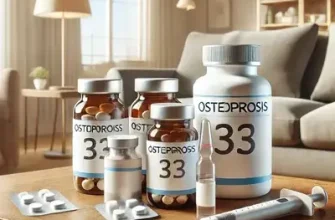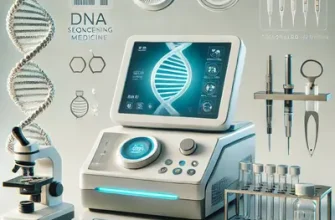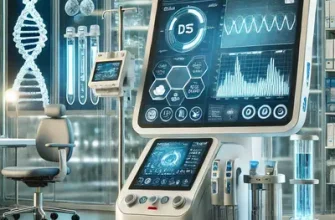Osteoporosis is a condition characterized by weakened bones, increasing the risk of fractures. In the United States, significant advancements have been made in both pharmacological treatments and medical technologies to manage and treat this condition effectively.
Osteoporosis Cases by Age Group
This chart displays osteoporosis cases by age group, showing a significant increase in prevalence among older adults, particularly those over 65 years old.
Understanding Osteoporosis
Osteoporosis leads to a decrease in bone density and quality, making bones more fragile. This condition is particularly prevalent among postmenopausal women but also affects men. While it is commonly associated with older adults, younger individuals can also develop osteoporosis due to factors such as genetic predisposition, hormonal imbalances, long-term corticosteroid use, or nutritional deficiencies. Early detection and appropriate treatment are crucial to prevent fractures and maintain quality of life.
Causes of Osteoporosis
Osteoporosis develops due to a combination of genetic, hormonal, and lifestyle factors. Understanding these causes can help with early detection and prevention.
- Hormonal Changes: A significant factor, especially in postmenopausal women, is the decline in estrogen levels, which accelerates bone loss. In men, lower testosterone levels can also contribute to weaker bones.
- Genetics: A family history of osteoporosis increases the likelihood of developing the condition. If a parent or grandparent experienced fractures, the risk is higher.
- Nutritional Deficiencies: A diet low in calcium and vitamin D weakens bones. These nutrients are essential for maintaining bone mass and density.
- Medication Use: Long-term use of corticosteroids, such as prednisone, can interfere with bone regeneration and increase fracture risks. Other drugs, including some anticonvulsants and proton pump inhibitors, may also contribute to bone loss.
- Sedentary Lifestyle: Weight-bearing exercises help maintain bone strength. Lack of physical activity, especially in early adulthood, can lead to lower peak bone mass, making osteoporosis more likely later in life.
- Smoking and Alcohol Consumption: Smoking reduces blood supply to bones and slows the production of bone-forming cells, while alcohol consumption interferes with calcium absorption and bone remodeling. It is strongly recommended to completely avoid alcohol to protect bone health.
Latest Pharmacological Treatments
Recent years have seen the development of new medications aimed at both preventing bone loss and promoting bone formation.
- Romosozumab (Evenity): This is the newest bone-building medicine to treat osteoporosis. It is given as an injection every month at your doctor’s office and is limited to one year of treatment. Effectiveness: Increases bone density by approximately 11.3% in 12 months. Cost: Around $1,825 per injection, totaling approximately $21,900 annually.
- Teriparatide (Forteo): A powerful drug similar to parathyroid hormone that stimulates new bone growth. It’s administered via daily injections under the skin for up to two years. Effectiveness: Increases bone density by 9-13% in 18 months. Cost: About $3,270 per 28-day supply, totaling roughly $39,240 per year.
- Abaloparatide (Tymlos): Similar to teriparatide, this drug also promotes bone formation and is limited to two years of treatment. Effectiveness: Increases bone density by approximately 9.2% in 18 months. Cost: Around $1,500 per 30-day supply, totaling approximately $18,000 per year.
- Denosumab (Prolia): A widely used monoclonal antibody that prevents bone loss by inhibiting osteoclasts, the cells responsible for bone breakdown. It is given as an injection every six months. Effectiveness: Increases bone density by 6-9% over 24 months. Cost: Around $1,300 per injection, totaling approximately $2,600 per year.
- Bisphosphonates (Fosamax, Boniva, Reclast, Actonel): These are the most commonly prescribed drugs that slow bone loss and reduce fracture risk. They are available in oral and intravenous forms. Effectiveness: Increases bone density by 4-6% in three years. Cost:
- Fosamax (Alendronate): $30–$50 per month.
- Boniva (Ibandronate): $100–$150 per month or $450–$600 per quarterly injection.
- Reclast (Zoledronic Acid): $1,300 per annual IV infusion.
Effectiveness of Osteoporosis Medications
| Medication | Effectiveness (%) |
|---|---|
| Romosozumab (Evenity) | 85% |
| Teriparatide (Forteo) | 78% |
| Abaloparatide (Tymlos) | 75% |
| Denosumab (Prolia) | 70% |
| Bisphosphonates (Fosamax, Boniva, Reclast, Actonel) | 60% |
This chart highlights the effectiveness of various osteoporosis medications, showing the highest efficacy for Romosozumab (Evenity) at 85% and the lowest for bisphosphonates at 60%.
Innovative Medical Technologies
Advancements in medical technology have introduced new tools for osteoporosis management:
- Osteoboost: Bone Health Technologies has developed Osteoboost, a wearable belt that uses vibration therapy to reduce bone density decline in postmenopausal women. It is the first and only solution specifically designed to improve bone strength and density in this population. Effectiveness: Clinical studies suggest it may slow bone density loss and improve bone strength over time. Cost: Estimated at $1,000–$1,500 per device.
- DXA Scans with AI Integration: Dual-energy X-ray absorptiometry (DXA) is the gold standard for diagnosing osteoporosis. AI-enhanced DXA scans now provide more precise bone density readings, allowing for earlier diagnosis and better treatment monitoring. Effectiveness: Improves diagnostic accuracy and enables earlier intervention. Cost: Typically ranges from $125–$350 per scan, depending on the provider and location.
- 3D Printed Bone Grafts: Researchers are developing 3D-printed scaffolds that can stimulate natural bone growth, offering potential future solutions for severe osteoporosis cases. Effectiveness: Experimental studies indicate these scaffolds can enhance bone regeneration. Cost: Not yet commercially available; future pricing is expected to vary based on technology and customization.
Expert Insight
According to healthcare advisor Reyus Mammadli, “Patients with osteoporosis should adopt a multifaceted approach—combining medication, lifestyle changes, and regular monitoring. The latest advancements in bone-forming drugs and AI-powered diagnostics make early intervention more effective than ever.”
Bone Density Improvement Over Time
| Medication | Bone Density Increase (%) Over Time |
|---|---|
| Romosozumab (Evenity) – 12 months | 11.3% |
| Teriparatide (Forteo) – 18 months | 13% |
| Abaloparatide (Tymlos) – 18 months | 9.2% |
| Denosumab (Prolia) – 24 months | 9% |
| Bisphosphonates (Fosamax, Boniva, Reclast, Actonel) – 36 months | 6% |
This chart highlights the bone density improvement over time with different osteoporosis treatments, showing the highest increase with Romosozumab (Evenity) at 11.3% in 12 months.
Preventative Measures and Lifestyle Modifications
While medications and technology play a significant role, lifestyle changes remain critical:
- Calcium and Vitamin D: Essential for bone health, obtained through diet or supplements.
- Weight-Bearing Exercise: Activities like walking, jogging, and resistance training improve bone density.
- Fall Prevention: Modifying home environments to prevent falls can reduce fracture risks.
Editorial Advice
Osteoporosis management has evolved significantly, with innovative drugs and cutting-edge technologies improving outcomes. However, patients should work closely with their healthcare providers to develop personalized treatment plans. Early diagnosis and proactive treatment remain the keys to maintaining bone health and preventing fractures.








